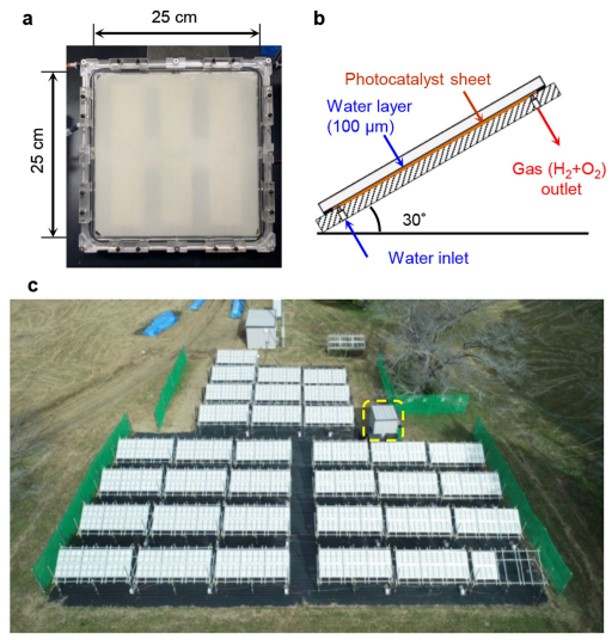Recently, a paper was published in Nature (doi.org/10.1038/s41586-021-03907-3), demonstrating a 100 m2 array of panel reactors to produce hydrogen from water under the sun.
Hydrogen is an attractive and versatile energy carrier, which can be produced from water through photocatalysis using sunlight, and through electrolysis driven by solar or wind energy. Photocatalytic water splitting reaches notably lower conversion efficiencies of only around 1%, but the system design is much simpler and cheaper and more amenable to scale-up. A single reactor unit has a light-accepting area of 625cm2 (25cm×25cm). 48 reactor units were assembled into a module to provide a light receiving area of 4m2, supported by a single scaffold. A total of 33 and 1/3 such modules (1600 reactor units) were assembled to achieve a 100m2 scale to produce hydrogen under the sunlight.
When coupling solar cells to electrolysis system (Solar-electrolysis), solar-to-hydrogen (STH) energy conversion efficiencies can reach as high as 30%.
Do you want to get high STH energy conversion efficiencies with your own solar panel and Dioxide Materials’ Anion Exchange Membrane water electrolyzer?
Please check out our Complete 5 cm2 AEM Water Electrolyzer and Complete 25 cm2 AEM Water Electrolyzer.


